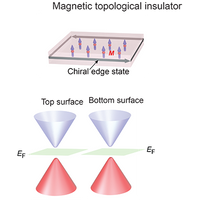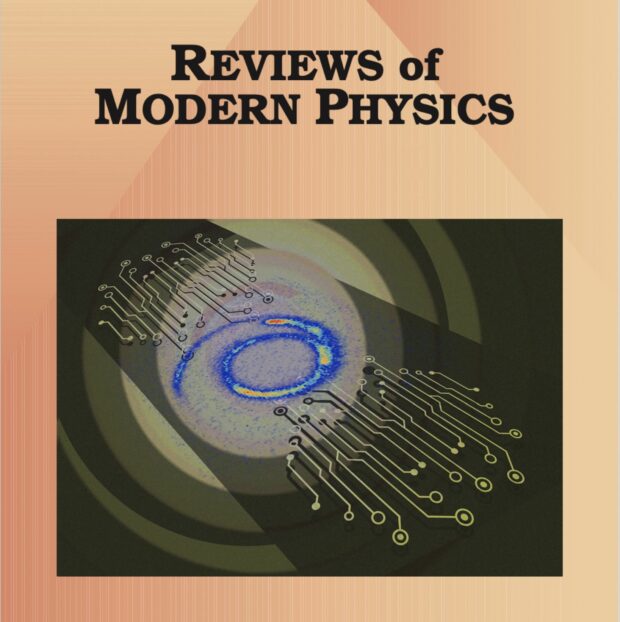讨论会:量子反常霍尔效应
IF 44.8
1区 物理与天体物理
Q1 PHYSICS, MULTIDISCIPLINARY
引用次数: 41
摘要
量子霍尔(QH)效应,即量子化霍尔电阻与零纵向电阻相结合,是陈氏绝缘子的特征实验指纹——具有破缺时间反转对称性的二维物质拓扑非平凡态。在Chern绝缘体中,非平凡体带拓扑由沿样品边缘携带电流而不耗散的手性态表示。量子反常霍尔效应(QAH)是指由于时间反转对称性自发破缺而在没有外部磁场的情况下发生的量子反常霍尔效应。QAH效应现已在四种不同类型的二维材料中实现:(i) (Bi,Sb)2Te3家族中磁性(Cr-和/或V-)掺杂的拓扑绝缘体薄膜,(ii)本征磁性拓扑绝缘体MnBi2Te4薄膜,(iii)由石墨烯形成的moir\'e材料,(iv)由过渡金属二硫族化合物形成的moir\'e材料。在本文中,我们回顾了每一类QAH绝缘子的物理机制,突出了它们的区别和共同点,并对QAH效应的潜在应用进行了评论。本文章由计算机程序翻译,如有差异,请以英文原文为准。

Colloquium
: Quantum anomalous Hall effect
The quantum Hall (QH) effect, quantized Hall resistance combined with zero longitudinal resistance, is the characteristic experimental fingerprint of Chern insulators - topologically non-trivial states of two-dimensional matter with broken time-reversal symmetry. In Chern insulators, non-trivial bulk band topology is expressed by chiral states that carry current along sample edges without dissipation. The quantum anomalous Hall (QAH) effect refers to QH effects that occur in the absence of external magnetic fields due to spontaneously broken time-reversal symmetry. The QAH effect has now been realized in four different classes of two-dimensional materials: (i) thin films of magnetically (Cr- and/or V-) doped topological insulators in the (Bi,Sb)2Te3 family, (ii) thin films of the intrinsic magnetic topological insulator MnBi2Te4, (iii) moir\'e materials formed from graphene, and (iv ) moir\'e materials formed from transition metal dichalcogenides. In this Article, we review the physical mechanisms responsible for each class of QAH insulator, highlighting both differences and commonalities, and comment on potential applications of the QAH effect.
求助全文
通过发布文献求助,成功后即可免费获取论文全文。
去求助
来源期刊

Reviews of Modern Physics
物理-物理:综合
CiteScore
76.20
自引率
0.70%
发文量
30
期刊介绍:
Reviews of Modern Physics (RMP) stands as the world's foremost physics review journal and is the most extensively cited publication within the Physical Review collection. Authored by leading international researchers, RMP's comprehensive essays offer exceptional coverage of a topic, providing context and background for contemporary research trends. Since 1929, RMP has served as an unparalleled platform for authoritative review papers across all physics domains. The journal publishes two types of essays: Reviews and Colloquia. Review articles deliver the present state of a given topic, including historical context, a critical synthesis of research progress, and a summary of potential future developments.
 求助内容:
求助内容: 应助结果提醒方式:
应助结果提醒方式:


